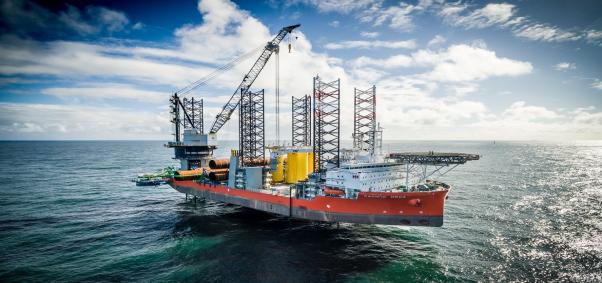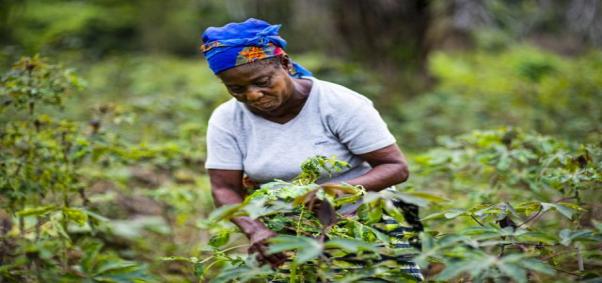
For a Better Climate and Economic Growth, the Future Must Be Female
by Rachel Spiegel
Rachel Spiegel is the Communications Assistant for the New Climate Economy.
This article was first published in WRI Insights.
From International Women’s Day on March 8th to Women’s History Month in the United States, the month of March is a good moment to focus on gender equality. Nearly 5 million individuals across the world participated in the Women’s March just over a year ago; in the U.S., a historic number of women are running for office, and the #MeToo and Time’s Up movements have drawn attention to the problems of sexual assault and harassment.
This increased attention on gender equality is an exciting step in the right direction. But social change cannot - and must not - remain the preserve of the prosperous, those who are able to use their smart phones to be active on social media or engage in politics. A more inclusive way of thinking about gender must account for women across the economic spectrum whose voices are often unheard.
Many women are among the most vulnerable to climate change, often at the front lines of its impacts. We need to tackle this aspect of gender inequality to make an effective transformation to a global sustainable economy. Without this action, we won’t achieve the environmental outcomes we seek.
Women are already disproportionately feeling the impacts of climate change, and the large gender gap in employment and wages makes women less able to respond. Women and children are 14 times more likely to die during natural disasters. And in Sub-Saharan Africa, where 71 percent of the burden of collecting water for households falls on women and girls, changing rainfall patterns could force women to travel even farther.
There is growing recognition of the leadership role women play for the success of mitigation and adaptation strategies. Countries with more women in parliament are more likely to set aside protected land areas and ratify international environmental treaties. Additionally, given that many women make significant contributions to household energy, water and other resources, involving women meaningfully in climate action is essential.
There is also a sizeable economic benefit to improving gender equality: advancing women’s equality could add a whopping $12 trillion to the global economy by 2025. Overall, greater gender equality translates into a better use of human capital, which leads to higher per capita GDP and increased competitiveness. More women joining the labor force translates to faster economic growth.
Getting More Women in the Work Force
But what will it actually take to have more women in the work force? The majority of women in developing countries, especially poor women, work in the informal sector, where jobs are largely unregistered, poorly paid and lack social protections such as maternity leave, health coverage, and childcare and other social support services. In urban areas, infrastructure services typically do not respond to their needs. For instance, women can face harassment and physical abuse on public transit, which may hamper their ability to move freely. That means women who can afford to, switch to private vehicle use, increasing traffic and congestion burdens. For example, Delhi’s odd-even scheme designed to reduce private vehicle use during the city’s most polluted winter days, exempted women drivers. Poorer women, however, are forced to change routes, often for less convenient or costlier options, or drop out of jobs (or education) entirely. Considering the needs of women is as essential as the fuel efficiency of public buses or expanding metro rail services if we are to build inclusive cities where women have equal access to jobs.
In rural areas, women often lack access to productive resources such as land, technology, education and financial services, which are critical to increasing and improving agricultural productivity and access to employment. This gender asset gap reduces their agricultural productivity by an average of 23-30 percent, which leads to a yield gap of 2.4-4 percent. Research has shown that just closing this gap could reduce undernourishment by as much as 17 percent, bringing the number of undernourished people down by as much as 150 million people globally.
While we may have far to go on the gender, economic and environmental fronts, there are encouraging signs of action. The renewable energy sector, for instance, shows promising examples of what gender-inclusive low-carbon economic opportunities can look like. Women represent approximately 35 percent of the renewable energy workforce, which is significant when considering women only account for 20-25 percent of the workforce in the overall energy industry. And within the renewables sector, women, on average, represent 32 percent of management roles, about 7 percent higher than the estimated number of senior-level management positions held by women in Fortune 500 companies.
It is exciting that new and fast-growing sectors, like renewable energy, are seeing more women at varied levels of work force participation. At the same time, we need to ensure that sustainable development and climate policies are not gender-blind. Involving women in planning and policy development, ensuring that their needs are met and that they are given, like men, the fullest opportunities to reach their economic potential – that’s good for climate, good for development, and good for growth.






